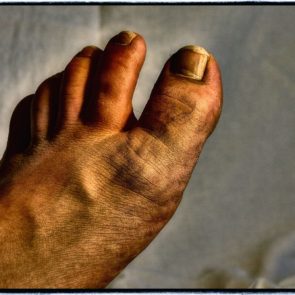Part 1: Understanding Ringworm - A Fungal Skin Infection

1.1 Ringworm: Not a Worm, But a Fungus
Despite its misleading name, ringworm is not caused by a worm but rather by a group of fungi known as dermatophytes. These fungi thrive in the dead layers of skin, hair, and nails, feeding on keratin, the protein that makes up these structures. The most common dermatophyte affecting cats is Microsporum canis. This fungus can survive for extended periods outside of a host, making it highly contagious and capable of persisting in the environment.
1.2 Symptoms of Ringworm: Recognizing the Signs
Ringworm presents with a variety of symptoms, making early detection essential. Be alert for the following signs in your feline companion:
- Circular, Scaly Patches of Hair Loss: Often referred to as "ringworm" due to their distinctive circular shape, these patches typically have a raised, red, inflamed border.
- Broken or Brittle Hair: The hair in the affected areas may appear broken, brittle, and easily shed.
- Crusting or Scabbing: The affected areas may develop crusting or scabbing, indicating the presence of inflammation and potential secondary bacterial infection.
- Excessive Itching: Cats with ringworm often exhibit intense itching, leading to scratching and biting at the affected areas, which can exacerbate the condition.
- Dandruff or Greasy Coat: Ringworm can also cause excessive dandruff or a greasy appearance of the coat, particularly in the areas of hair loss.
It is crucial to remember that some cats may display only mild symptoms or even appear symptom-free, while others might suffer from severe, widespread infection. If you suspect ringworm, consulting a veterinarian is essential for accurate diagnosis and treatment.
Part 2: Causes and Transmission of Ringworm: Spreading the Fungus

2.1 How Ringworm Spreads: Direct and Indirect Contact
Ringworm spreads through direct contact with an infected animal, person, or contaminated objects. The fungal spores can easily transfer from one surface to another, making it a highly contagious condition. Common transmission routes include:
- Direct Contact with an Infected Cat: Sharing grooming tools, bedding, or engaging in physical contact can readily transmit the fungal spores.
- Contact with Infected Objects: Contaminated objects like bedding, toys, food and water bowls, grooming tools, and even furniture can harbor the spores and serve as vectors for transmission.
- Contact with Contaminated Soil or Vegetation: Fungal spores can persist in soil and vegetation, posing a risk to cats that come into contact with these environments.
- Contact with Infected Human Skin: Humans can also acquire ringworm from infected cats and spread it to other humans or animals.
Young kittens, cats with compromised immune systems, and those with pre-existing skin conditions are particularly vulnerable to ringworm infections.
2.2 Who is at Risk: Factors Increasing Susceptibility
While any cat can contract ringworm, several factors increase the risk of infection:
- Age: Kittens and senior cats are more susceptible due to their underdeveloped or weakened immune systems, respectively.
- Immune Status: Cats with compromised immune systems, such as those with feline immunodeficiency virus (FIV) or feline leukemia virus (FeLV), are more likely to develop ringworm.
- Environmental Factors: Overcrowded environments, lack of proper sanitation, poor hygiene, and exposure to contaminated soil or vegetation increase the risk of transmission.
- Stress: Stress can weaken the immune system, making cats more vulnerable to ringworm and other infections.
Part 3: Diagnosing Ringworm in Cats: Confirming the Infection
3.1 Veterinary Examination: The First Step
If you suspect your cat has ringworm, scheduling a veterinary appointment is crucial. Your veterinarian will conduct a thorough physical examination, looking for the characteristic symptoms of ringworm. They may also take samples of skin, hair, or scales for further laboratory testing.
3.2 Laboratory Testing: Microscopical and Culture Examination
To confirm the diagnosis of ringworm, laboratory testing is essential. Two common methods are used:
- Microscopical Examination: A sample of skin, hair, or scales is examined under a microscope to identify the presence of fungal hyphae and spores, which are characteristic of dermatophytes.
- Culture Test: A sample is placed on a culture medium and incubated for several weeks. If the sample contains dermatophytes, the fungus will grow on the medium, allowing for definitive identification.
The culture test is generally considered the most reliable method for diagnosing ringworm, as it provides a definitive confirmation of the presence of the specific fungal species involved.
3.3 Woods Lamp Examination: Fluorescent Test
In some cases, a Woods lamp (which emits ultraviolet light) may be used during the examination. Certain strains of ringworm fungi fluoresce under this light, making the diagnosis easier. However, this test is not always reliable, as some strains do not fluoresce, and the results can be influenced by factors such as the cat's coat colour.
Part 4: Treatment Options for Ringworm in Cats: Fighting the Fungus
4.1 Antifungal Medications: Targeting the Fungus
Treatment for ringworm in cats typically involves antifungal medications. The choice of medication and duration of treatment are determined by the severity of the infection and the cat's overall health status. Common antifungal medications used include:
- Oral Medications: These are typically administered for several weeks or months, depending on the severity of the infection. Examples include itraconazole (Itrafungol) and terbinafine (Lamisil). Oral medications are generally effective for systemic ringworm infections.
- Topical Treatments: Topical medications include antifungal creams, shampoos, or sprays that are applied directly to the affected areas. Examples include miconazole (Daktarin) and clotrimazole (Canesten). Topical treatments are often used for localized infections.
4.2 Other Treatments: Supporting Healing
In addition to antifungal medications, your veterinarian may recommend other treatments to aid in the healing process:
- Clipping the Affected Areas: Clipping the hair in the affected areas allows for better penetration of the antifungal medications and facilitates their effectiveness.
- Cleaning the Affected Areas: Regular cleaning of the affected areas helps to remove debris and reduce the spread of the fungus.
- Supportive Care: Providing a comfortable and stress-free environment, ensuring adequate nutrition, and addressing any underlying health conditions can help to boost the cat's immune system and promote healing.
Part 5: Preventing Ringworm in Cats: Protecting Your Feline Friend
5.1 Sanitation and Hygiene: Maintaining a Clean Environment
Preventing ringworm involves a multi-pronged approach that encompasses both cat care and environmental hygiene. The following measures are crucial:
- Regular Grooming: Brushing your cat's coat regularly helps to remove loose hair and debris, reducing the build-up of dead skin cells that can harbor the fungus. Pay particular attention to areas of hair loss or unusual skin changes.
- Cleaning Bedding and Toys: Wash your cat's bedding and toys regularly in hot water and detergent. This helps to kill any fungal spores that may be present on these items.
- Disinfecting Surfaces: Thoroughly clean and disinfect all surfaces that your cat comes into contact with, including floors, furniture, scratching posts, and food and water bowls. Use a bleach-based disinfectant diluted according to the manufacturer's instructions.
- Hand Washing: Always wash your hands thoroughly with soap and water after handling your cat or any contaminated objects. This helps to prevent the spread of ringworm to other animals or humans.
5.2 Avoiding Contact with Infected Animals: Limiting Exposure
If you are considering adopting a new cat, ask the shelter or breeder if the cat has been tested for ringworm. If you have multiple cats, isolate any suspected cases to prevent the spread of infection. If you have a cat with a confirmed ringworm diagnosis, avoid contact with other animals and humans, including children, until the infection is resolved.
5.3 Vaccination: Strengthening the Immune System
While there is no specific vaccine for ringworm, keeping your cat up-to-date on its core vaccinations, including the feline distemper vaccine, helps to strengthen its immune system and make it less susceptible to various infections, including ringworm. Vaccination is a vital part of preventive healthcare for cats.
Part 6: Ringworm in Humans: Zoonotic Transmission
6.1 Can Humans Catch Ringworm From Cats: A Zoonotic Risk
Yes, ringworm is a zoonotic disease, meaning it can be transmitted from animals to humans. Humans usually develop ringworm as itchy, red, circular patches of skin, often on the hands, arms, or face. It is generally treated with topical antifungal medications.
6.2 How to Prevent Human Infection: Protecting Yourself
The best way to prevent human infection is to follow the same rigorous hygiene practices recommended for preventing ringworm in cats. Wash your hands thoroughly after handling your cat, clean and disinfect any contaminated surfaces, and avoid direct contact with infected skin. If you have a cat with ringworm, avoid close contact with them until the infection is cleared.
Part 7: Ringworm: Common Questions Answered
7.1 How Long Does It Take to Treat Ringworm in Cats: Duration of Treatment
The duration of treatment for ringworm varies depending on the severity of the infection, the type of antifungal medication used, and the cat's overall health. It can take anywhere from several weeks to several months to clear the infection completely. Consistent treatment, regular monitoring by your veterinarian, and strict adherence to hygiene protocols are crucial for successful management.
7.2 Is Ringworm Contagious to Other Animals: Spreading to Other Pets
Yes, ringworm is highly contagious to other animals, particularly cats, dogs, and other small mammals. The fungal spores can easily spread through direct contact, contaminated objects, and the environment. It is important to isolate infected cats to prevent the spread to other pets and humans.
7.3 Can Ringworm Be Fatal to Cats: Potential Complications
While ringworm is rarely fatal to cats, especially with prompt treatment, it can cause significant discomfort, stress, and secondary complications. Untreated ringworm can lead to severe skin infections, hair loss, and even systemic fungal infections in rare cases. It is vital to seek veterinary attention promptly for any suspected case of ringworm.
7.4 How Long Does Ringworm Live in the Environment: Persistence of Spores
The fungal spores that cause ringworm can survive for extended periods in the environment, even for several months. This is why rigorous sanitation and hygiene measures are essential to prevent the spread of the infection. Regular disinfection of surfaces, thorough cleaning of bedding and toys, and proper disposal of contaminated items are crucial to minimize the risk of reinfection.
7.5 Can Cats Recover Fully From Ringworm: Complete Resolution of Infection
With timely and appropriate treatment, most cats recover fully from ringworm. However, reinfection is possible if the environment is not thoroughly disinfected, hygiene practices are not maintained, or the cat is exposed to new sources of infection. After successful treatment, it is important to continue following preventative measures to minimize the risk of recurrence.
7.6 What are the Long-Term Effects of Ringworm in Cats: Potential Sequelae
In most cases, ringworm does not have long-term effects on cats if it is treated promptly and effectively. However, if left untreated or if the infection is severe, it can lead to permanent hair loss, scarring, and even systemic complications. In some cases, cats may develop recurrent ringworm infections, particularly if they have underlying immune system problems or are exposed to contaminated environments.
Everyone is watching
-

Are Cat Ribs Flexible? Understanding Their Anatomy
CATS & KITTENSThis article delves into the fascinating world of feline anatomy, exploring the flexibility of cat ribs and ho...
-

Can Cats Eat Bananas? (Everything You Need to Know)
CATS & KITTENSThis article dives into the intriguing question of whether cats can safely enjoy the sweet, yellow fruit, bana...
-

Cat Lifespan: How Long Do Cats Live?
CATS & KITTENSThis comprehensive guide explores the factors influencing the lifespan of our feline companions, providing ins...
-

Can Cats Get COVID-19? What You Need to Know
CATS & KITTENSThis article will delve into the fascinating world of feline COVID-19 susceptibility. We'll explore whether ca...
-

Can Cats Eat Eggs? A Complete Guide to Egg Safety for Your Feline Friend
CATS & KITTENSWhen it comes to treating our furry companions, we all want to ensure we're doing what's best for them. Eggs...
